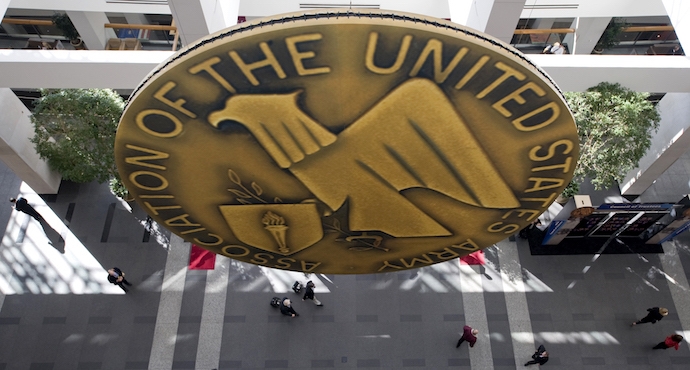
Cyber operations and land power.
(Update 10.07.16) We conclude our coverage of the Association of the United States Army's 2016 Meeting and Exposition with today's issue. We'd like to offer particular thanks to the Military Cyber Professionals Association, who organized the Cyber Pavilion and invited us to participate. Sponsoring the Pavilion were Jericho Systems, F5 Networks, and AUSA. Our colleagues in the Pavilion included United States Cyber Command, the Army Cyber Institute at West Point, the Army Reserve Cyber Operations Group, the Cybersecurity Forum Initiative, the National Defense University's Information Resources Management College, Cyber Patriot, and the National Defense University's Center for Technology and National Security Policy.
(Update 10.06.16) AUSA 2016 closed yesterday, but before it did, the Institute of Land Warfare Contemporary Military Forum held two sessions of particular interest to the cyber security sector. The morning opened with a panel on " Threats in the 2030 Operating Environment." Led by the US Army's senior intelligence officer, Lieutenant General Robert P. Ashley, Jr. (Deputy Chief of Staff, G-2, United States Army) the panel included military officers and political scientists with particular expertise in geopolitics and security affairs. Their consensus was that the world in 2030 would be more multipolar than it is today, that the US-led institutions that have sustained the post-World War Two order would come under increased stress (which they may prove unable to meet), and that the US assumption that it would remain a technological generation ahead of its adversaries (an assumption "baked into US strategy," as panelist Peter Singer put it) would be proven false.
These trends offer an implicit argument for more effective, faster, technological innovation. At the end of the day the Forum's session on "The Future of Army Public-Private Partnerships and Cyberspace" took up that topic. Led by Lieutenant General Edward Cardon, Commanding General, United States Army Cyber Command and Second Army, the panelists offered opinion and insight on how the US Department of Defense in general and the Department of the Army in particular can keep from falling behind the pace of innovation industry sets in the commercial market.
Part of the challenge lies, several of the panelists thought, in the way the acquisition system, especially insofar as it's driven by formally articulated requirements, tends not to frame the operators' problems effectively.
General Cardon expressed it this way during questions and answers. Responding to a call from the audience to the effect that it was time for a "Manhattan Project" for cyber, Cardon demurred. "The Manhattan Project idea falls apart because there's no clarity about the problem. The Department is driven by requirements, and requirements are solutions to problems." To effectively engage industry and profit from its capacity for innovation, the Army needs to formulate and pose, as clearly as possible, the problems to which it's seeking solutions. "We should," Cardon said, "be in the problem business."
We'll be offering complete accounts of these two sessions soon.
(Update 10.05.16) The US Army's leaders speaking at the conference have expressed a very strong commitment to integrating cyber operations at all levels of conflict, from the tactical to the operational; when appropriate to the strategic.
Several of the speakers have drawn a close connection among growing urbanization, worldwide, the continued failure of states, and the coming pervasiveness of cyber threats and opportunities. Soldiers operating in urban areas, for example, can and should expect to operate under conditions of continuous electronic surveillance. This will shape the battlespace in challenging ways.
The greatest uncertainties, speakers have said, cluster around the survival or failure of the institutions in which the US-led post-World War II security order has found expression: the United Nations, NATO, the European Union, the World Bank, the IMF, and others. These institutions are under stress, and their future is unclear.
We'll offer updates later this week as the conference wraps up.
(10.04.16) To state the obvious, cyber conflict doesn't occur in a political, military, or strategic vacuum. It's stakes and conditions are set by broader concerns: even (especially?) the 400-pound hackers out there live in meatspace, and retain some connection to the non-virtual world. Obvious as this may be, it's worth a periodic reminder that it's so.
The CyberWire attended the 2016 Association of the United States Army Annual Meeting and Exposition in Washington, where we spoke with people about the connections between cyber warfare and other forms of conflict.
